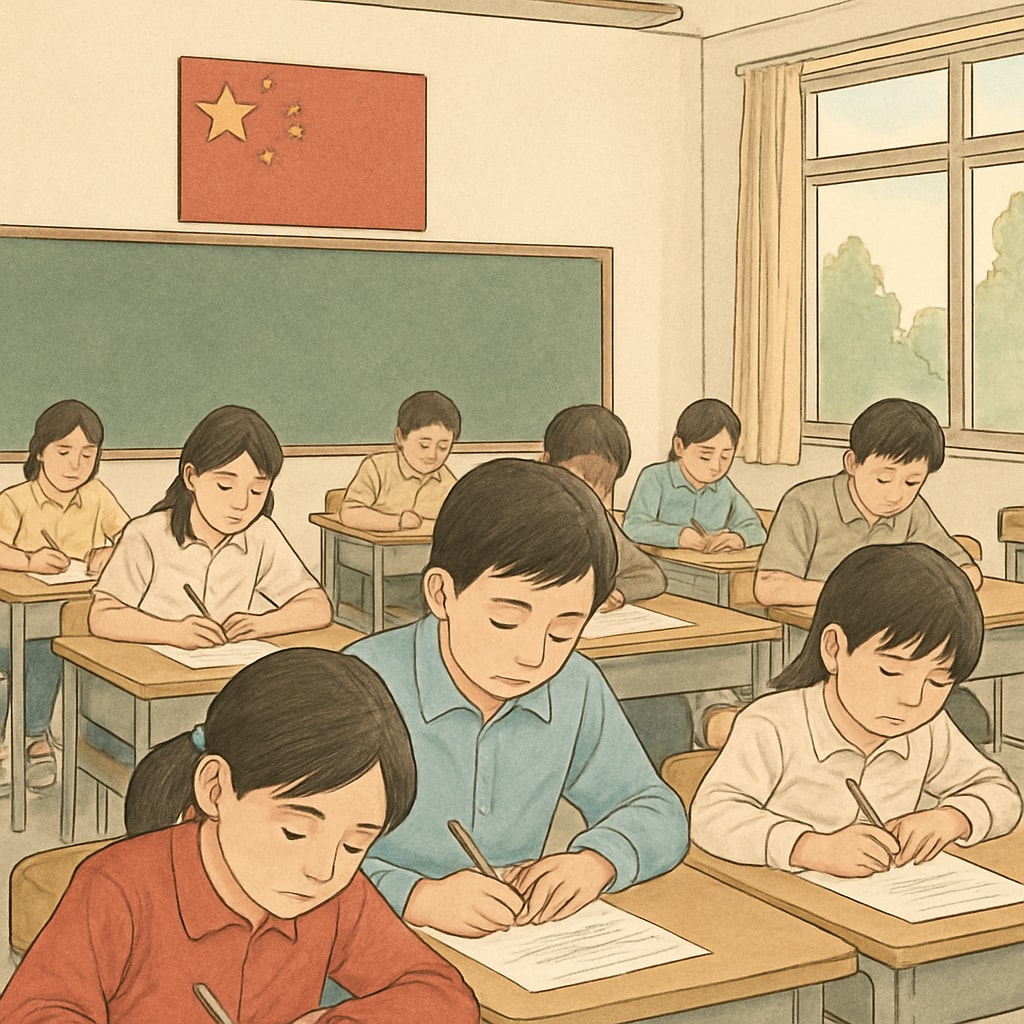The education systems in China and the United States reflect two distinct approaches to shaping young minds. These systems differ not only in methodology but also in the core values they promote. While the Chinese system emphasizes elite education, academic pressure, and rigorous testing systems, the American system leans toward fostering equality, individuality, and identity development. These contrasting philosophies offer unique advantages and challenges, shaping students’ futures in profoundly different ways.

Educational Values: Elite Achievement vs. Individual Growth
In China, the education system is built around the value of meritocracy, where academic success is a gateway to social mobility. The cornerstone of this system is the “gaokao” (national college entrance exam), which determines students’ futures based on their performance. This high-stakes approach fosters a culture of intense competition and discipline, but it also places immense academic pressure on students.
In contrast, the American education system values individuality and identity formation. Schools aim to create well-rounded citizens by offering a diverse curriculum that includes arts, sports, and community service alongside academics. While American students may face less standardized testing, the system’s focus on equality and inclusivity can sometimes dilute academic rigor, especially in underfunded schools.
Methods of Teaching: Testing Systems vs. Holistic Learning
China’s education system relies heavily on rote learning and memorization, especially in preparation for exams. This method ensures that students master core subjects thoroughly but may limit creativity and critical thinking. The testing system serves as a filter for selecting the best and brightest, aligning with the nation’s focus on elite education.
The American approach, however, prioritizes project-based learning and critical thinking. Teachers are encouraged to adapt their methods to students’ individual needs, fostering creativity and problem-solving skills. However, this flexibility can lead to inconsistencies in educational quality across different schools and districts, often influenced by socioeconomic factors.

The Impact on Students’ Futures
The Chinese model produces students with strong foundations in mathematics, science, and other core subjects, preparing them for careers in technical and professional fields. However, the intense academic pressure and focus on exams can lead to burnout and mental health challenges.
On the other hand, the American system equips students with soft skills like communication, teamwork, and adaptability, which are highly valued in a globalized world. Yet, the lack of emphasis on rigorous academic standards in some schools can leave students underprepared for competitive fields.
Striking a Balance: Lessons from Both Systems
Neither system is perfect, but both offer valuable lessons. China’s focus on discipline and academic excellence can inspire a stronger work ethic in students, while the US system’s emphasis on creativity and individuality highlights the importance of personal growth. Policymakers in both countries could benefit from adopting a hybrid approach, combining the strengths of each system to create a more balanced educational experience.
For example, integrating more creative and project-based learning into China’s curriculum could foster innovation, while a greater emphasis on core academic skills in US schools could enhance overall student performance. By learning from each other, both nations can prepare their students for the challenges of the 21st century.
Readability guidance: Short paragraphs and clear headings enhance readability. Transitions like “however,” “therefore,” and “for example” connect ideas, while balanced sentence lengths maintain an engaging flow.


